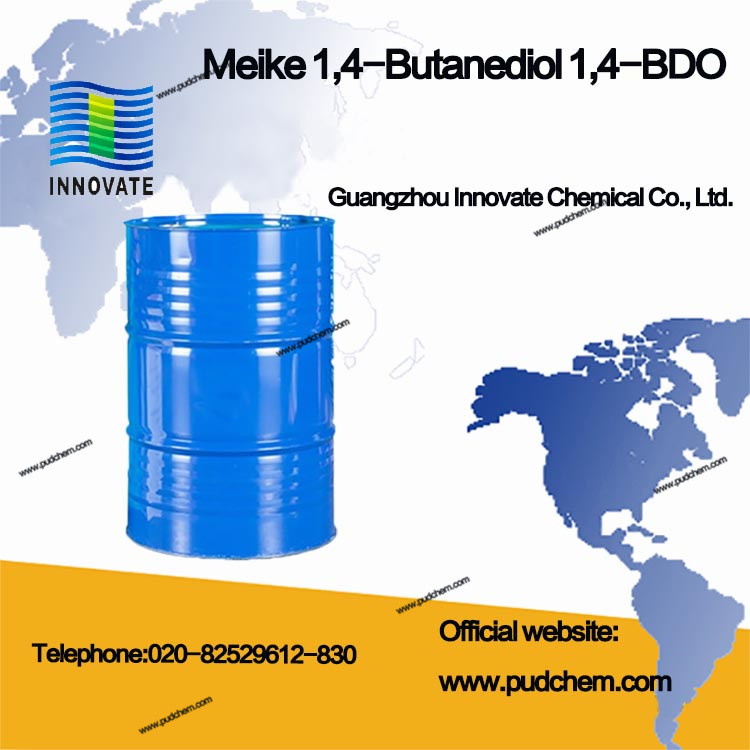Meike 1,4-Butanediol 1,4-BDO

Basic parameters
|
CAS No |
110-63-4;UN 2716 |
|
molecular formula |
C4H10O2 |
|
molecular weight |
99.12 |
|
nature |
Typical value |
|
purity |
≥99.5% |
|
state |
Colorless oily liquid |
|
flammable melting point |
20.1℃ |
|
boiling point |
235℃ |
|
Flash point (open cup) |
121℃ |
|
Viscosity@25℃ |
71.5mPa·s |
Purpose
1,4-Butanediol is widely used, except for the production of polybutylene terephthalate (PBT), tetrahydrofuran (THF), γ-butyrolactone (GBL), N-methylpyrrolidone (NMP), In addition to fine chemical products with high added value such as N-vinylpyrrolidone (NVP), polyurethane resin (PU) and high-performance elastic fiber SPANDEX (spandex), they are widely used as solvents, pharmaceuticals, cosmetics, plasticizers, curing agents, Pesticides, herbicides, foam artificial leather, fibers, engineering plastics, etc.
chemical properties
It has strong reactivity and can carry out various chemical reactions such as oxidation, dehydration, replacement, polymerization, amination, esterification, halogenation, etc., to generate a series of important chemical products. Hygroscopic, miscible with water, soluble in methanol, ethanol and acetone.
Production Process
1,4-butynediol is prepared from acetylene and formaldehyde in the presence of a catalyst, and then it is prepared by catalytic hydrogenation. It can also be obtained from 1,3-butadiene, acetic acid and oxygen through acetyl oxidation, hydrogenation, hydrolysis and other reactions.
Packaging and storage
Packed in aluminum, galvanized iron drums or plastic drums, or stored and transported as flammable and toxic substances in tankers. Because the melting point is as high as 20 ℃, the tank car should be equipped with a heating tube.
- PREV:Evonik Original Air Chemical Original American Gas Ancamide Series, Ancamine Series & Anquawhite Series Floor Epoxy Curing Agent
- NEXT:Japan UBE PCDL Polycarbonate Diol UH PH BH UHC UM UC UP Each Series Model Index





















